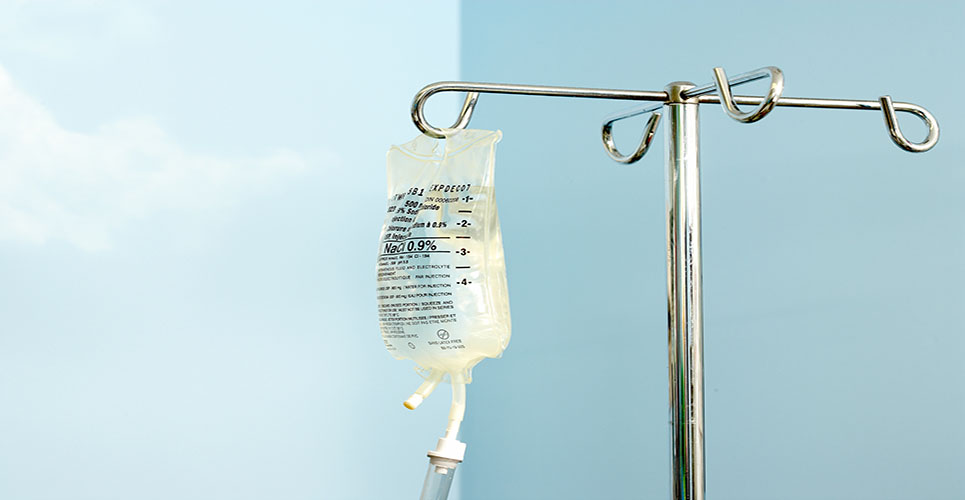An intravenous antibiotic that could benefit patients and help reduce pressure on hospitals is now available in the UK.
Xydalba™ (dalbavancin hydrochloride) is an IV antibiotic approved by the European Medicines Agency (EMA) for the treatment of acute bacterial skin and skin structure infections (ABSSSI) in adults. It is the first and only option for ABSSSI that offers a complete course of IV therapy delivered as a single 30-minute infusion.
An intravenous antibiotic that could benefit patients and help reduce pressure on hospitals is now available in the UK.
Xydalba™ (dalbavancin hydrochloride) is an IV antibiotic approved by the European Medicines Agency (EMA) for the treatment of acute bacterial skin and skin structure infections (ABSSSI) in adults. It is the first and only option for ABSSSI that offers a complete course of IV therapy delivered as a single 30-minute infusion.
Compared to other IV antibiotics that may need to be administered for up to 14 days and can require hospitalisation, in clinical trials, Xydalba successfully treated a majority of patients as outpatients.3
Xydalba’s clinical development programme also demonstrated that it was as effective and as well tolerated as other intravenous antibiotics.1,2,3 Xydalba was also shown to be as effective against MSSA and MRSA bacteria.1
ABSSSI can be potentially life-threatening. They include conditions such as cellulitis/erysipelas, wound infections and major skin (cutaneous) abscesses. There are more than 290,000 estimated cases of serious skin infections in the UK, with 79% receiving IV antibiotics as a first line treatment.4 Cellulitis accounts for 8% of emergency hospital admissions.5
At present, IV antibiotic treatment for ABSSSI can be administered in the hospital, through outpatient departments, or OPAT (outpatient parenteral antimicrobial Therapy) centres. There are many health and social issues, such as a challenging home environment, inadequate transport or a lack of available support from family or caregivers which can exclude patients from OPAT services. This results in admission and a period of time in hospital.6 Xydalba can be delivered in one or two-doses and offers the opportunity for these patients to be treated and discharged home.2
Prof David Livermore of the Norwich Medical School (University of East Anglia) commented: “One- or two-dose regimens of dalbavancin have the potential to get ABSSSI patients home early and to remodel how we think of OPAT.”
Over 15,000 patients have already been treated with dalbavancin globally and no unexpected trends or new safety signals were identified.7
Said Kiran Bhirangi, Head of Medical Affairs Cardiome: “Xydalba represents a significant breakthrough in how ABSSSI are treated. It enables the patient to receive a course of effective treatment and go home.
“If the patient remains in the hospital for daily infusions, this not only uses the scarce resources of the NHS, but increases the risk of patients contracting further infections.
“Because a majority of the patients in the clinical trials were treated as outpatients with either a single or two 30 minute infusions, leaving the hospital can be an option, reducing the need for taking time off work, or for caregivers having to take time off to care for family members.”3
Xydalba is classified as a ‘narrow spectrum’ antibiotic. Government guidelines currently recommend the use of narrow spectrum antibiotics, where appropriate, to help prevent antibiotic resistance.8
References
- Boucher HW, Wilcox M, Talbot GH, Puttagunta S, Das AF, Dunne MW. Once-weekly dalbavancin versus daily conventional therapy for skin infection. N Engl J Med. 2014;370(23):2169-2179 http://www.nejm.org/doi/full/10.1056/NEJMoa1310480
- Dunne MW, Puttagunta S, Giordano P, Krievins D, Zelasky M, Baldassarre J. A randomized clinical trial of single dose vs weekly dalbavancin for treatment of acute bacterial skin and skin structure infection. Clin Infect Dis. 2016;62(5):545-551 https://www.ncbi.nlm.nih.gov/pmc/articles/PMC4741365/pdf/civ982.pd
- Dunne MW, Talbot GH, Boucher HW, Wilcox M, Puttagunta S. Safety of Dalbavancin in the Treatment of Skin and Skin Structure Infections: A Pooled Analysis of Randomized, Comparative Studies. Drug Saf. 2016 Feb;39(2):147-57 https://www.ncbi.nlm.nih.gov/pmc/articles/PMC4735234/pdf/40264_2015_Article_374.pdf
- Real-World Practice Patterns for the Treatment of Complicated Skin and Soft Tissue Infections in Europe: A Retrospective Database Analysis. The Medicines Company, 2015
- Emergency Admissions for Ambulatory Care Sensitive Conditions – characteristics and trends at national level. NHS England, March 2014
- Chapman A. Outpatient Parental Antimicrobial Therapy. BMJ (Published 26 March 2013)
- Data on file (Allergan)
- UK Five Year Antimicrobial Resistance (AMR) Strategy 2013-2018 https://www.gov.uk/government/publications/uk-5-year-antimicrobial-resistance-strategy-2013-to-2018(Accessed March 2017)

